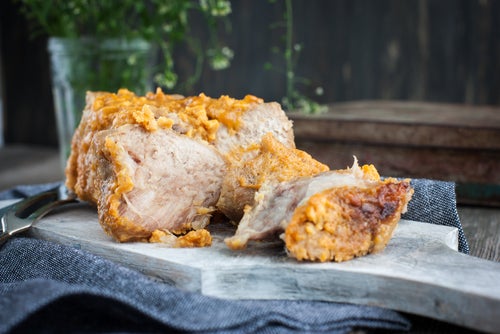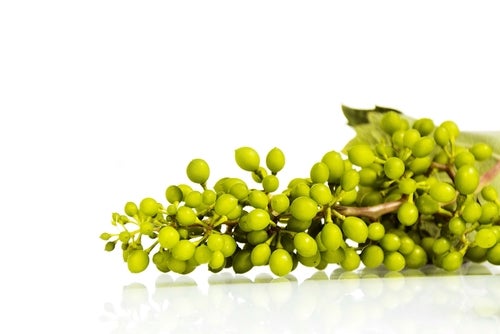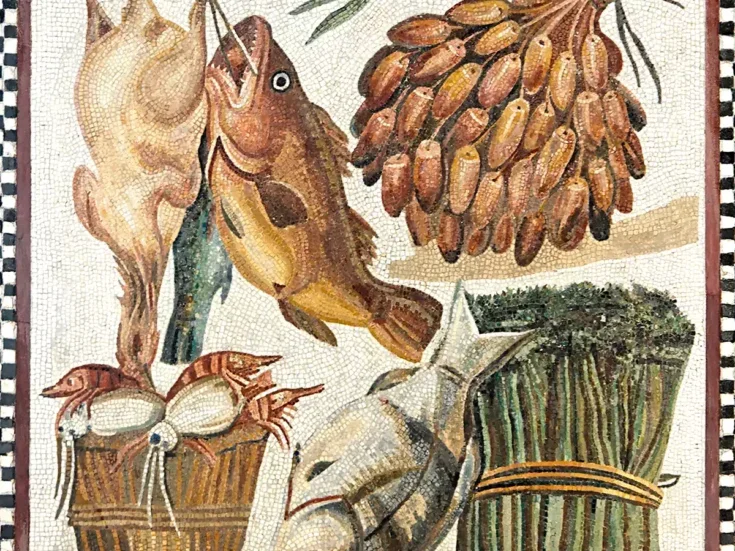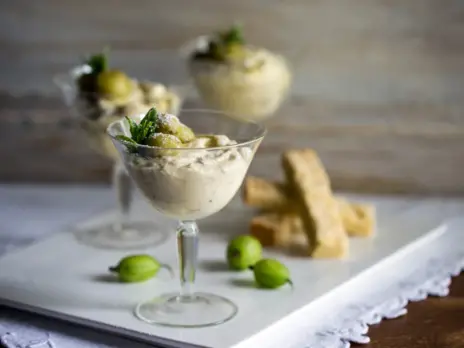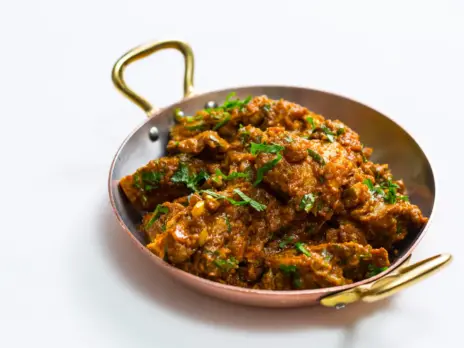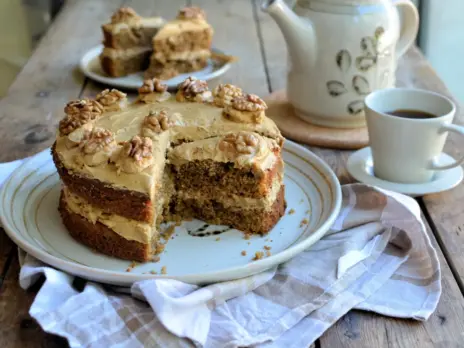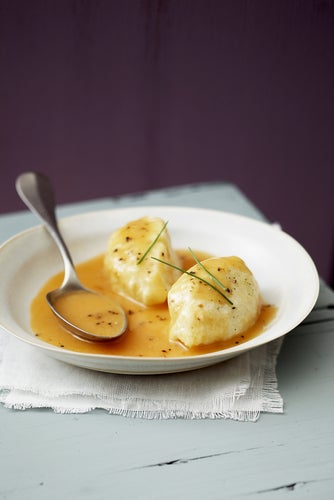
I had visions of peppering this article (forgive the unintentional pun) with pithy quotations from literature and from historic and even contemporary figures who have been, or are, aficionados of quenelles de brochet Nantua, rather as one can cite any number of famous rulers, novelists, and poets who have admired and praised Vin de Constance. But quenelles sauce Nantua, to give the dish its alternative name, which seems so emblematic of French regional cuisine, appears not to have had the impact in the wider world that I thought.
Leafing through any book of traditional French cooking shows that I am far from being alone in regarding this dish of delicately rich, but fairly light, torpedo-shaped pike “dumplings” under a blanket of crayfish-butter sauce as one of the hexagon’s regional classics. Indeed, some are very emphatic about its status. Cuisine du Terroir: The Lost Domaine of French Cooking (1987; the French original published in 1984) introduces quenelles de brochet as: “Not so much a speciality as an institution, a subject of debate, and a matter for rebellion […]”
I had high hopes of Proust’s La Recherche du Temps Perdu for an apt quotation, but all I found—in Le Côté Guermantes, the third volume (published in two parts in 2020–2021)—was quenelles of unspecified type and only then with reference to Madame Guermante’s vocabulary, which is described as being confined to “antiquated expressions and as richly flavoured as the dishes you can come across in the delicious books of Pampille but which have become so rare in real life, food in which the jellies, the butter, the juices, the quenelles are unadulterated […]” (Penguin Modern Classics translation). Pampille was the pseudonym of Marthe Allard Daudet whose Les Bons Plats de France, published in 1913, is regarded as a classic in culinary France (although out of print since 2008).
In the end, the great French film of Sacha Guitry, Si Versailles m’était conté (1954), and James Bond came to the rescue. In Guitry’s 1954 film, usually translated as Royal Affairs in Versailles, quenelles sauce Nantua is mentioned as a delicacy (un mets de choix). I wonder if it was this film that gave rise to the idea that the dish became popular at the palace of Versailles in the eighteenth century and was served at the great dinners held there by Louis XV? Tourism websites of the Haut-Bugey region and Ain department, where Nantua is located, and various cooking websites support the idea, but I have yet to find evidence that this was the case.
Writing at the end of the same decade, Ian Fleming has 007, in Goldfinger, daydreaming about staying the night and having quenelles de brochet (no mention of the sauce) at the Auberge de la Montespan, which overlooked the river on the road to Blois just outside Orléans in the Loire Valley. He resists the temptation and falls back on Orléans’ Hotel de la Gare, where he has oeufs en cocotte and sole meunière (which doesn’t sound too bad to me).
The word quenelle is usually said to be derived from the German Knödle (dumpling), or possibly the Alsace knepfle. Exactly when it emerged isn’t clear, although it was later than a very similar preparation for a forcemeat called godiveau, using veal (usually), that is still made. A recipe for poultry quenelles certainly appeared in the 1750 Dictionaire des Aliments, but it was not until the end of the 19th century that the first recipe for fish quenelles was published. The 1890 Dictionnaire Universel de Cuisine gave a recipe for quenelles de poisson á la Lyonnaise—Lyon, the capital of Auvergne-Rhône-Alps region, is just over an hour’s drive southwest of Nantua.
When sauce Nantua emerged isn’t clear either, but crayfish, originally a type called écrevisses à pattes rouges, have been caught in the lakes and rivers surrounding Nantua for centuries.
How to make quenelles de brochet Nantua
In the 1890 recipe, brochet (pike) is not specified, but, like crayfish, it was abundant locally, in the lakes and ponds of the Dombes region north of Lyon, and pounding it and sieving it to make quenelles was a way of dealing with a singularly bony fish. Two ingredients that were specified were beef fat and bone marrow for the panade, the “paste” of flour, water, and fat, which is made in advance and chilled, and into which the pounded pike, together with another quantity of animal fat and fresh egg whites are then incorporated. By 1903, Escoffier, in Le Guide Culinaire, was specifying beef kidney fat, or half and half beef fat and marrow. The proportions given for the quenelles are 500g each of pike, beef kidney fat (or fat and narrow), and panade and four egg whites.
Animal fat is still stipulated today by La Confrérie de la Quenelle Sauce Nantua, the association created to preserve and protect the culinary heritage of the dish, including by staging an annual Fête de la Quenelle in the town on the first Saturday of October (the 17th festival is on October 4 this year). It also stipulates hard wheat flour (sémoule de blé dur) and that the panade should be made around 72 hours in advance. Very importantly, to qualify as a quenelle de brochet, the proportion of pike must be at least 22 percent (any less and it is a quenelle å base de brochet).

If the process, all done by hand, is beginning to sound prolonged, it is. Before you embark on the panade, you make the beurre d’écrevisses, ready to incorporate it (in a minimum proportion of seven percent) in a béchamel sauce that you prepare for the sauce Nantua. You also have to make the quenelles by taking pieces of the mixture, shaping them into torpedoes (or sausages) and poaching them in gently simmering water for about 20 minutes. Finally, you lay the quenelles in a gratin dish, cover them with the sauce, and put them in an oven heated to 200ºC (400ºF) for five minutes.
Elizabeth David is never one to beat about the bush, so no wonder she wrote in French Provincial Cooking (1960): “Making these quenelles is a lengthy and tedious business involving much pounding and sieving of the flesh of the pike, blending it with panade, cream, white of egg, and so on.” And no wonder she said that it was rare to get them as they should really be and advised, “one should be very careful about ordering quenelles de brochet in any but those restaurants with the very highest reputation to maintain.” That advice still applies 65 years later.
If you are making the dish yourself, Anne Willan, as long ago as 1991 in La France Gastronomique, allowed the use of a food processor, but her ingredients for both the quenelles and the Sauce Nantua, like her method, diverged significantly from those prescribed by the Confrérie.
The best wines to pair with quenelles de brochet Nantua
The ease of choosing wines to pair with quenelles sauce Nantua is happily in inverse proportion to the complications of preparing the dish. That’s not to say that you can’t mis-choose (to coin a phrase). As you might expect, a dish with fish, animal fat, flour, and a dairy-rich shellfish sauce, doesn’t go readily with red-wine tannins. Traditional amber wines are difficult for the same reason. And few rosés are made with this sort of dish in view. The exceptions are generally complex, oak-vinified rosés that evolve in the bottle, mostly from Provence.
This, then, is a dish that can take a wine with weight and the complexity of oak vinification and age. Chardonnay has an affinity with it, not only from the Côte d’Or but much further afield. I hardly need to name names, but these suggest themselves: a Meursault Les Narvaux or a Premier Cru Les Charmes-Dessus or Les Perrières from, for example, Guy Roulot, Bouchard Père et Fils, or Château de Meursault. From California, I would happily drink at any time over the next eight years the 2021 vintage of Marimar Estate La Masía Chardonnay Don Miguel Vineyard.
Another grape variety that goes well is Marsanne (with or without a little Roussanne), particularly in northern Rhônes such as St-Joseph and Crozes-Hermitage that have seen some oak and bâtonnage. St-Péray Blanc can also work, from Alain Voge, for example, but some St-Péray feels a little light. Condrieu, in contrast, has the volume, but tends to be too aromatic, as do other serious Viogniers. More successful is Pessac-Léognan that has acquired the smoky-sweet patina of age.
The dish is also an opportunity for those who like sparkling wine with food to enjoy a mature vintage or prestige Champagne or similarly complex sparkling wine from elsewhere. Beyond France, I would also suggest top Soave Classico and northwest Spain’s Godello.
The Ain department has its own wines, collectively known as Vins du Bugey (or just Bugey) and all produced in fairly small, sometimes tiny, quantities, including the historic Seyssel (still wine as well as sparkling). I would like to say these are a horse-and-carriage match with quenelles sauce Nantua. They can be with quenelles de brochet with a lighter sauce, but with Nantua sauce the dish is usually too much for the wines, even most of those made from the high quality Altesse grape (previously known as Roussette). There is something innately satisfying about drinking local wine with local dishes, but it isn’t always perfect. But then again, perfection isn’t everything.

